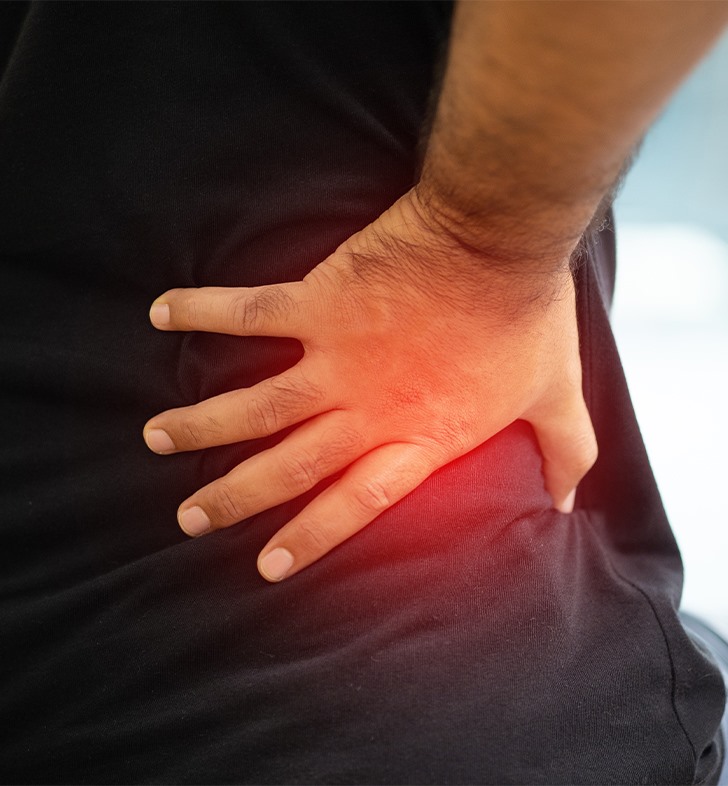
Back Strains and Sprains
How common are back strains and
sprains?
Strains and sprains are very common
injuries. Next to headaches, back problems are the most common complaint to
healthcare professionals.
What causes a back strain or sprain?
Twisting or pulling a muscle or
tendon can result in a strain. It can also be caused by a single instance of
improper lifting or by overstressing the back muscles. A chronic (long-term)
strain usually results from overuse after prolonged, repetitive movement of the
muscles and tendons.
A sprain often occurs after a fall
or sudden twist, or a blow to the body that forces a joint out of its normal
position. All of these conditions stretch one or more ligaments beyond their
normal range of movement, causing injury.
In addition, several factors can put
a person at greater risk for a back strain or sprain, including:
Curving the lower back excessively
Being overweight
Having weak back or abdominal
muscles, and/or tight hamstrings (muscles in the back of the thighs).
Playing sports that involve pushing
and pulling—such as weightlifting and football—also increases the risk of a low
back injury.
What are the symptoms of a back
strain or sprain?
Symptoms of a strain or sprain
include:
Pain that gets worse when you move
Muscle cramping or spasms (sudden
uncontrollable muscle contractions)
Decreased function and/or range of
motion of the joint (difficulty walking, bending forward or sideways, or
standing straight)
In some cases, the person may feel a
pop or tear at the time of the injury.
How are back sprains and strains
diagnosed?
Mild strains and sprains can usually
be diagnosed based on a medical history—including a review of the symptoms and
how the injury occurred—and a physical examination by a healthcare provider. In
cases of more severe strains and sprains, especially when there is weakness or
loss of function, an X-ray may be taken to rule out a fractured (broken) or
herniated (bulging) disc as the cause of the back pain.
How are back strains and sprains
treated?
The treatment for strains and
sprains is similar, and often takes place in two phases.
The goal of the first phase is to
reduce the pain and spasm. This may involve rest, and the use of ice packs and
compression (pressure), especially for the first 24 to 48 hours after the
injury. An over-the-counter nonsteroidal anti-inflammatory drug, such as
ibuprofen (Motrin®), may be recommended to help reduce pain and swelling.
After the first 24 to 48 hours,
returning to normal activities, as tolerated, is advisable. Extended bed rest
or immobility (nonmovement) simply prolongs symptoms and delays recovery.
Most people with lumbar
strain/sprain symptoms improve in about 2 weeks. If symptoms continue for more
than 2 weeks, additional treatment may be required.
What complications are associated
with back strains and sprains?
The most common complication of a
back strain or sprain is a reduction in activity, which can lead to weight
gain, loss of bone density, and loss of muscle strength and flexibility in
other areas of the body.
How can back sprains and strains be
prevented?
It is not possible to prevent all
back injuries, but you can take some steps to help lower the risk of a sprain
or strain:
Eat a healthy, well-balanced diet to
keep your bones and muscles strong.
Maintain a healthy weight. Excess
weight puts added stress on the structures of the lower back.
Exercise regularly, including
stretching, to keep your joints flexible and your muscles in good condition.
Practice safety measures to help
prevent falls, such as wearing shoes that fit properly, and keeping stairs and
walkways free of clutter.
Use good body mechanics when
sitting, standing and lifting. For example, try to keep your back straight and
your shoulders back. When sitting, keep your knees bent and your feet flat on
the floor. Don’t over-reach, and avoid twisting movements. When lifting, bend
your knees and use your strong leg muscles to help balance the load.
Stop smoking. Nicotine interferes
with blood flow to the muscles.